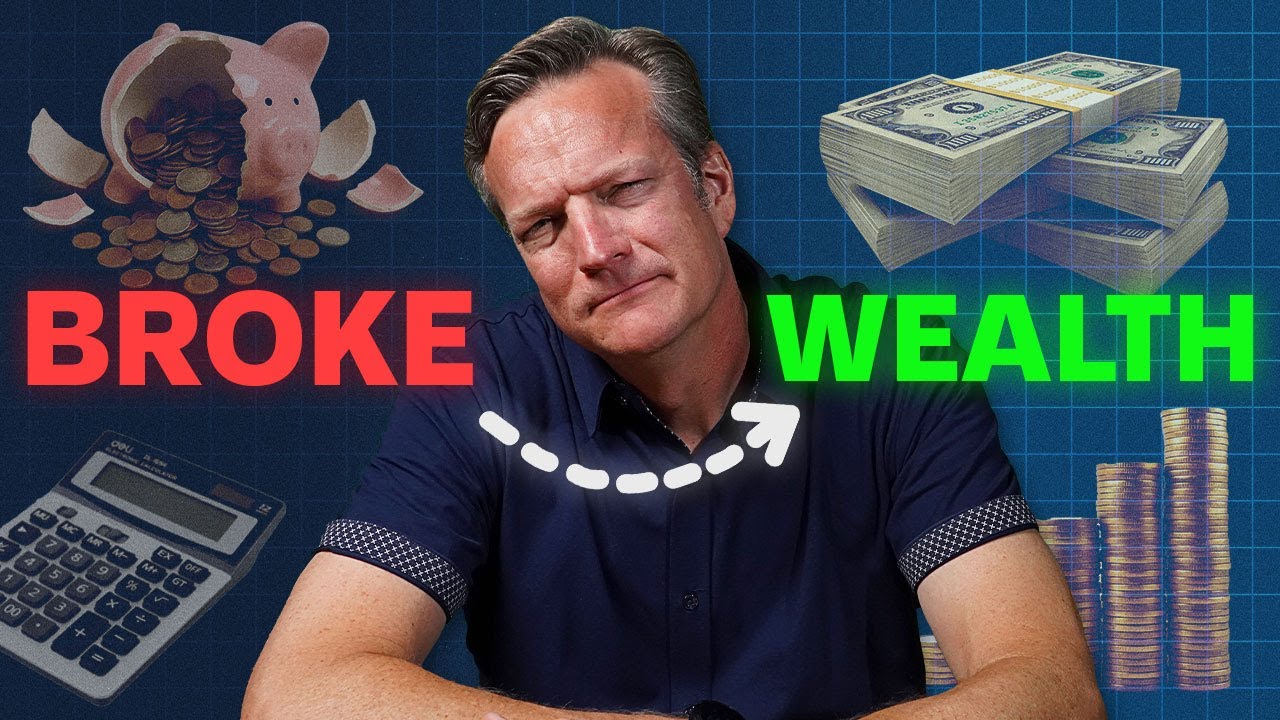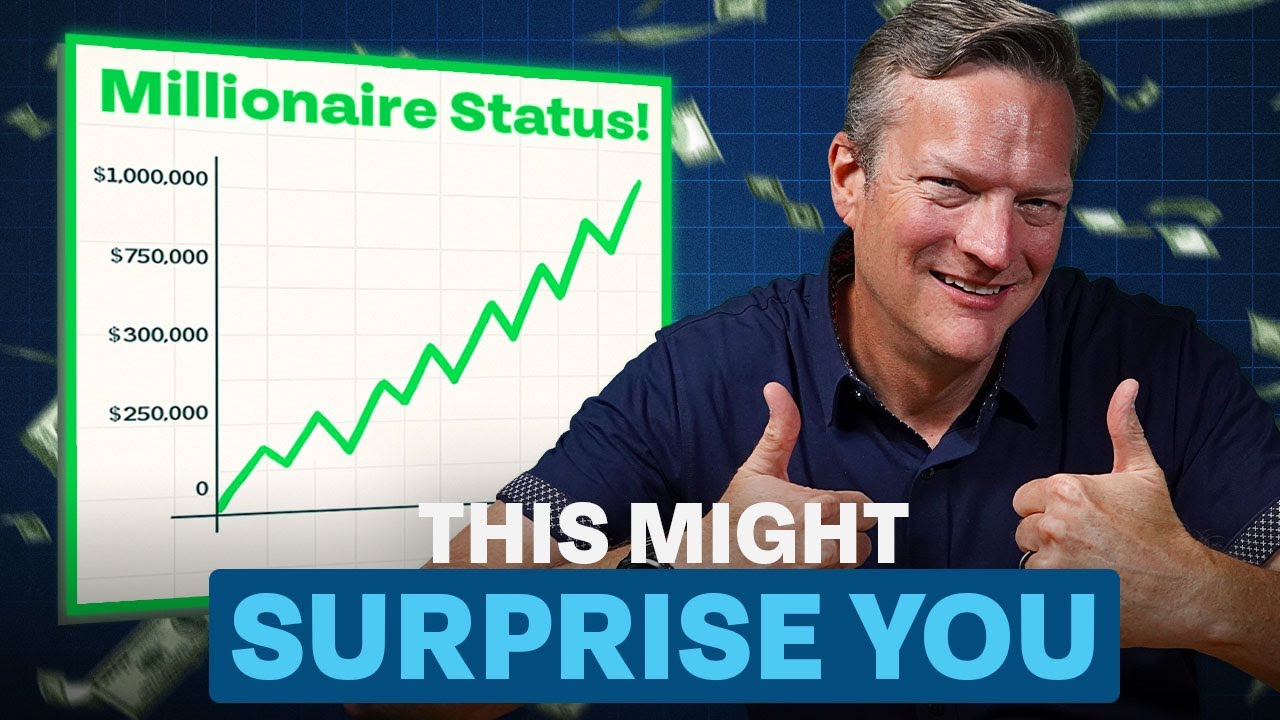Okay, Steven’s question is up next. He says, ‘I happen to have the ear of the person currently researching possible new 401K provider options.’ Hey, what are the bullet points I can give him to make sure he picks a good one? So, does it sound like a good opportunity here? What should he say? Well, you’re really good at that stuff. Yeah, so it’s great you’re looking at— I want to read the very first part because I want to make sure I get my language right. Read the very first part. ‘I have the ear of the person currently researching possible new 401K provider options.’ Possible new provider options. So, there’s two things. Like, here’s where my mind immediately goes. Okay, they’re looking for a new provider.
So, one of the things you can immediately think is, one thing we want this 401K to have is amazing investment options. We want a really robust lineup of good, low-cost investments. I want some solid index funds in there, but I also want index funds across a number of different asset classes. Maybe a US large-cap index, maybe an international index, maybe small-cap, maybe I want real estate, maybe I want fixed income. You want to think about a number of different asset classes to get you access to. But maybe say, you know, our workforce, they might not know as much about investing. And even though I love the Money Guy show, they might not love the Money Guy show. Hey, employer, what would you think about putting in some Target Retirement index funds? Because these might be great solutions for 401K participants where all they got to do is decide two things: when can I retire, and how much do I save? If you can figure that out, a Target Date Retirement fund can be great. So, having those available inside of 401Ks can be awesome.
And then you just want to make sure that you have enough options that people can build a solid portfolio, but not so many that they fall into analysis paralysis. A lot of times, we’ll see 401Ks and they got, like, 120 different options, and you’re like, ‘Oh my goodness, this is like growth with this, growth with that, growth with this, growth,’ and you’re like, ‘Holy cow, you don’t need a ton in there.’ I think a really good plan maybe has 20, 30 different options, well diversified across there. So, that’s kind of the first part of it, right? Good, low-cost investments.
What I think is interesting though is when you’re thinking about a provider, that’s a really good time to think about how the plan functions. Now, this is where you got to be a little delicate, in my opinion, because let’s say that you work for an employer that does a 1% match if you put 1% in. Well, the reason they do that is the plan has to pass some sort of testing at the end of the year to make sure that it does not incorrectly discriminate against non-highly compensated employees versus highly compensated employees. Well, one of the things you might be able to say to your HR department or the person you have is, ‘Hey, is there a different way that we could do this plan that, guess what, for you as the boss, for you as the employer, for you as the—it’s going to save you money and it’s going to make it cheaper to run the plan and it’s going to make it where you can actually max out the 401K and not worry about hitting that match? Have you considered something that has like a safe harbor provision in there?’ I would recommend looking at some of the plan structure.
And then, how do you think they should approach, like, ‘Oh, maybe we look at something like profit-sharing,’ or is there some way that we might be able to structure this thing so that we can benefit not just me as the person, the participant, but maybe the company and entity and enterprise as a whole? So, Stephen, it’s easy to kind of focus on all the things that would benefit you. But I have all good negotiations or just being a good person, it’s create the win-win situations. That’s what I love. What we get to do, we create tons of win-win situations: wins for you out there in the audience, wins for our clients, but of course, wins for as—we’re growing The Firm. I think you nailed it with the fact that the wins for you, Stephen, is if you can get better investment choices, but also it’s the second thing that Bo is alluding to, is winning through the plan design. Not all 401K specialists are created equally, and that’s where Bo was also going. Because I can tell you, we’ve looked at plans. Like, I know when we spoke at Toyota, and we were talking to a group of their executives, I was like, ‘Man, this is a well-designed plan.’ I mean, they had—I mean, whoever was designing Toyota’s North America’s 401K understood about Mega Roth conversions. They had a lot of great index options. They had great pullover choices that they gave us that Bo stole, and I don’t know where that pullover is anymore. I’m still looking for it. But it goes back to the point—I’m so sore over it’s gone—but it is one of those things where I would encourage you to let your HR or the owner directly that if you have the right plan design, the reason the government has a lot of these rules in place is they want to make sure that there’s not a Boss Hog scenario going on where the employer is loading themselves up but really not taking and helping out their employee so that they’re actually building independence. But if you can understand Safe Harbor provisions, if you can understand that 401Ks are just the entryway into, and a match is the first component that an employer will look at, but then beyond that, you’ll go to profit-sharing. And then that’s a strap-on option that you can do, and there’s some unique things how these things coordinate together. And then of course, if you have a very high-income, high cash flow type business that the owners are really worried about their taxes, you can strap a cash balance plan on top of that and do some unique testing. Also, how the testing is designed. I mean, because you can do it age-based. You always have to pay attention to is the owner of the company about the same age as all the employees, or is the owner an old dude or an old lady, and all their employees are young. That matters too. You can structure off the plan design matters by composition of your employees as well as what are the goals and desires. So everybody gets a win.
And I think if you have the right consultant, not the person just looking for, you know, a whack-a-mole where they just everything looks like it’s just a hammer situation, and we’ll sell you this insurance plan with, yeah, let you do salary deferrals. No, you need somebody who’s actually spending enough time understanding, instead of a hammer on this, why don’t I actually pull out the crescent wrench or on this one, maybe we need to design it with this tool in mind. Get you the right person. Now, I would be a horrible business person if I didn’t share with you. We work with clients all across the country, and we also do plan design and other things. So, if you’re an employer, if you really have their ear and you want to change their life and change your training, I’d encourage you to take the relationship to the next level. Go to moneyguy.com or aboundwealth.com because we do work with people all over the country to help them with these issues.













